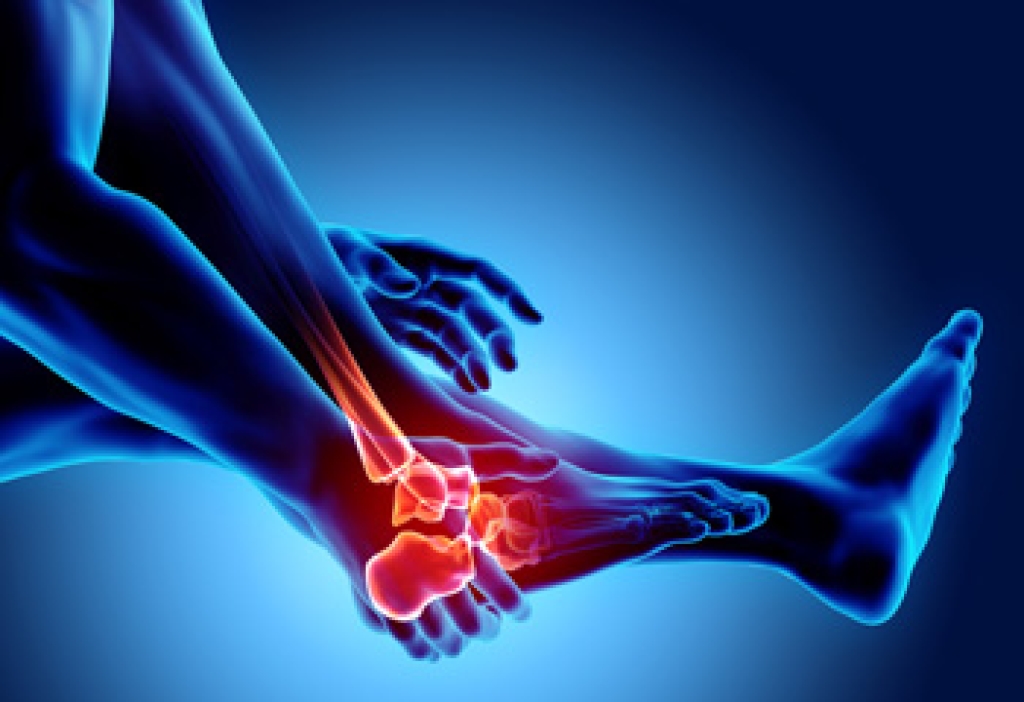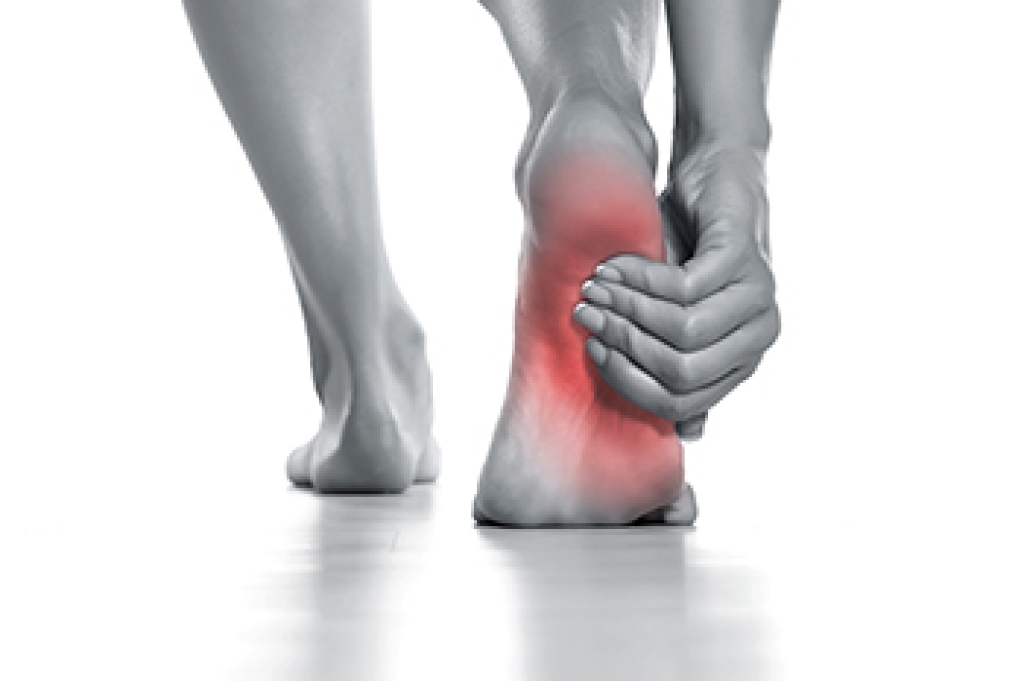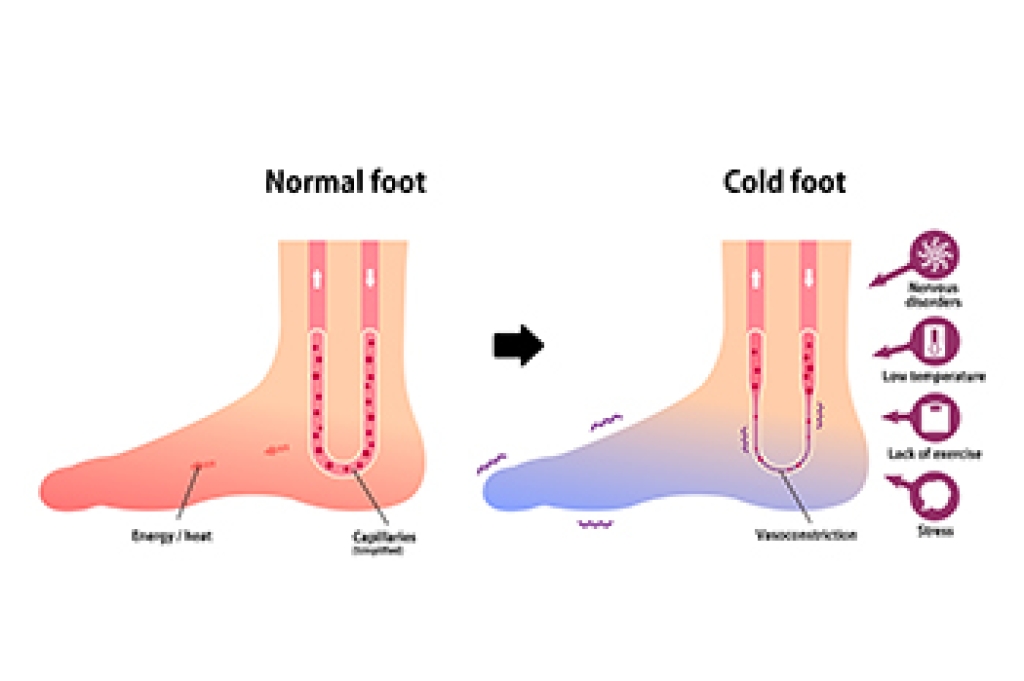Blog
Foot Stress Fractures in Active Individuals

Foot stress fractures are small cracks in the bones of the foot that develop from repeated impact and overuse. They are especially common in athletes and military personnel due to intense physical training. Causes include training errors, sudden increases in activity, and muscle fatigue that reduces the body’s ability to absorb shock. Symptoms often include pain, swelling, and tenderness that worsen with movement. A podiatrist can diagnose stress fractures with imaging tests, recommend rest and supportive footwear, and create a recovery plan to prevent future injury. If you have persistent foot pain during or after activity, it is suggested that you schedule an appointment with a podiatrist who can provide an accurate diagnosis and treatment.
Activities where too much pressure is put on the feet can cause stress fractures. To learn more, contact one of our podiatrists from Geller Foot Clinic. Our doctors can provide the care you need to keep your pain free and on your feet.
Dealing with Stress Fractures of the Foot and Ankle
Stress fractures occur in the foot and ankle when muscles in these areas weaken from too much or too little use. The feet and ankles then lose support when walking or running from the impact of the ground. Since there is no protection, the bones receive the full impact of each step. Stress on the feet can cause cracks to form in the bones, thus creating stress fractures.
What Are Stress Fractures?
Stress fractures occur frequently in individuals whose daily activities cause great impact on the feet and ankles. Stress factors are most common among:
- Runners
- People affected with Osteoporosis
- Tennis or basketball players
- Gymnasts
- High impact workouts
Symptoms
Pain from the fractures occur in the area of the fractures and can be constant or intermittent. It will often cause sharp or dull pain with swelling and tenderness. Engaging in any kind of activity which involves high impact will aggravate pain.
If you have any questions please contact our office located in Lathrup Village, MI . We offer the newest diagnostic and treatment technologies for all your foot and ankle needs.
Plantar Heel Pain May Indicate Plantar Fasciitis

Plantar heel pain is most often caused by plantar fasciitis, an inflammation of the thick band of tissue that runs along the bottom of the foot connecting the heel to the toes. This condition develops when the fascia is strained from overuse or stress. Risk factors include limited ankle dorsiflexion, or the upward bending motion of the foot, obesity, flat feet, and standing for long periods of time, all of which increase pressure on the heel. Symptoms usually involve sharp pain with the first steps in the morning or after rest. A podiatrist can evaluate the cause, provide treatments such as targeted stretching exercises, orthotics, and footwear guidance, and help prevent recurrence. If you suffer from persistent heel pain, it is strongly suggested that you promptly consult a podiatrist who can accurately diagnose and treat plantar fasciitis.
Plantar fasciitis is a common foot condition that is often caused by a strain injury. If you are experiencing heel pain or symptoms of plantar fasciitis, contact one of our podiatrists from Geller Foot Clinic. Our doctors can provide the care you need to keep you pain-free and on your feet.
What Is Plantar Fasciitis?
Plantar fasciitis is one of the most common causes of heel pain. The plantar fascia is a ligament that connects your heel to the front of your foot. When this ligament becomes inflamed, plantar fasciitis is the result. If you have plantar fasciitis you will have a stabbing pain that usually occurs with your first steps in the morning. As the day progresses and you walk around more, this pain will start to disappear, but it will return after long periods of standing or sitting.
What Causes Plantar Fasciitis?
- Excessive running
- Having high arches in your feet
- Other foot issues such as flat feet
- Pregnancy (due to the sudden weight gain)
- Being on your feet very often
There are some risk factors that may make you more likely to develop plantar fasciitis compared to others. The condition most commonly affects adults between the ages of 40 and 60. It also tends to affect people who are obese because the extra pounds result in extra stress being placed on the plantar fascia.
Prevention
- Take good care of your feet – Wear shoes that have good arch support and heel cushioning.
- Maintain a healthy weight
- If you are a runner, alternate running with other sports that won’t cause heel pain
There are a variety of treatment options available for plantar fasciitis along with the pain that accompanies it. Additionally, physical therapy is a very important component in the treatment process. It is important that you meet with your podiatrist to determine which treatment option is best for you.
If you have any questions, please feel free to contact our office located in Lathrup Village, MI . We offer the newest diagnostic and treatment technologies for all your foot care needs.
Understanding Arch Pain and How to Find Relief

Arch pain is a common foot complaint that affects people of all ages. It often feels like a burning or aching sensation in the bottom of the foot, especially in the arch area. Symptoms may worsen after long periods of standing, walking, or physical activity. Causes can include plantar fasciitis, flat feet, high arches, overuse injuries, or wearing unsupportive footwear. The arch may appear swollen, red, or tender to the touch. A podiatrist can provide an accurate diagnosis through a physical exam, gait analysis, and possibly imaging tests. Depending on the cause, treatment includes custom orthotics, stretching exercises, footwear recommendations, or anti-inflammatory medications. In more severe cases, injections or surgery may be considered. Arch pain can interfere with daily activities and overall comfort, so it is suggested that you make an appointment with a podiatrist to address the issue and restore healthy foot function.
Foot Pain
Foot pain can be extremely painful and debilitating. If you have a foot pain, consult with one of our podiatrists from Geller Foot Clinic. Our doctors will assess your condition and provide you with quality foot and ankle treatment.
Causes
Foot pain is a very broad condition that could be caused by one or more ailments. The most common include:
- Bunions
- Hammertoes
- Plantar Fasciitis
- Bone Spurs
- Corns
- Tarsal Tunnel Syndrome
- Ingrown Toenails
- Arthritis (such as Gout, Rheumatoid, and Osteoarthritis)
- Flat Feet
- Injury (from stress fractures, broken toe, foot, ankle, Achilles tendon ruptures, and sprains)
- And more
Diagnosis
To figure out the cause of foot pain, podiatrists utilize several different methods. This can range from simple visual inspections and sensation tests to X-rays and MRI scans. Prior medical history, family medical history, and any recent physical traumatic events will all be taken into consideration for a proper diagnosis.
Treatment
Treatment depends upon the cause of the foot pain. Whether it is resting, staying off the foot, or having surgery; podiatrists have a number of treatment options available for foot pain.
If you have any questions, please feel free to contact our office located in Lathrup Village, MI . We offer the newest diagnostic and treatment technologies for all your foot care needs.
Foot and Toe Injuries Related to Cold Temperatures

Cold-related foot injuries, such as frostbite, chilblains, and trench foot, occur when feet are exposed to prolonged cold and damp conditions. Frostbite happens in freezing temperatures, leading to tissue damage as blood flow slows. Symptoms include numbness, discoloration, and potentially blistering. Chilblains, or painful, itchy swelling, develop when skin repeatedly warms up too quickly after cold exposure, causing blood vessels to leak. Trench foot, resulting from prolonged dampness in cold conditions, leads to tissue breakdown, swelling, and pain. These injuries are especially common among outdoor workers, hikers, and individuals without proper cold-weather footwear. Prevention involves wearing insulated, moisture-wicking socks and waterproof boots to keep feet warm and dry. If symptoms develop, it is suggested that you rewarm feet and visit a podiatrist promptly, so that the severity can be assessed and complications avoided.
Toe pain can disrupt your daily activities. If you have any concerns, contact one of our podiatrists of Geller Foot Clinic. Our doctors can provide the care you need to keep you pain-free and on your feet.
What Causes Toe Pain?
Most severe toe pain is caused due to a sports injury, trauma from dropping something heavy on the toe, or bumping into something rigid. Other problems can develop over time for various reasons.
Toe pain can be caused by one or more ailments. The most common include:
- Trauma
- Sports injury
- Wearing shoes that are too tight
- Arthritis
- Gout
- Corns and calluses
- Hammertoe
- Bunions
- Blisters
- Ingrown toenails
- Sprains
- Fractures (broken bones)
- Dislocations
When to See a Podiatrist
- Severe pain
- Persistent pain that lasts more than a week
- Signs of infection
- Continued swelling
- Pain that prevents walking
Diagnosis
In many cases the cause of toe pain is obvious, but in others, a podiatrist may want to use more advanced methods to determine the problem. These can range from simple visual inspections and sensation tests to X-rays and MRI scans. Prior medical history, family medical history, and any recent physical traumatic events will all be taken into consideration for a proper diagnosis.
Treatment
Treatments for toe pain and injuries vary and may include shoe inserts, padding, taping, medicines, injections, and in some cases, surgery. If you believe that you have broken a toe, please see a podiatrist as soon as possible.
If you have any questions please contact our office located in Lathrup Village, MI . We offer the newest diagnostic and treatment technologies for all your foot and ankle needs.

